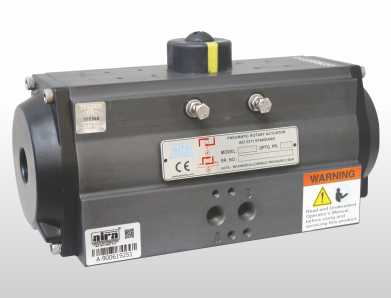Pneumatic actuators are widely used in a variety of industries, such as automation, manufacturing, and process control. They are designed to convert the energy stored in compressed air into motion, making them a reliable and cost-effective solution for a range of applications.
In this comprehensive guide, we’ll explore the basics of pneumatic actuators, how they work, the different types available, and their key advantages and disadvantages.
What are Pneumatic Actuators?
Pneumatic actuators are mechanical devices that use compressed air to generate motion. They are commonly used to control the movement of valves, dampers, or other process control equipment. They are designed to operate in harsh industrial environments and are capable of providing precise and reliable control in a range of applications.
How do Pneumatic Actuators Work?
Pneumatic actuator work by converting the energy stored in compressed air into motion. When air is compressed and stored in a cylinder, it creates potential energy that can be harnessed to generate motion. This motion is generated when the compressed air is released into the actuator cylinder.
The motion generated by a pneumatic actuator can be linear or rotary, depending on the design of the device. In linear actuators, the compressed air moves the piston in a straight line, while in rotary actuators, it rotates a shaft to generate motion.
Types of Pneumatic Actuators
There are several types of pneumatic actuators, each with its own unique features and benefits. Some of the most common types include:
Double-Acting Pneumatic Actuators: These actuators use compressed air to move a piston in both directions, allowing for bi-directional movement.
Single-Acting Pneumatic Actuators: These actuators use compressed air to move a piston in one direction only, making them a more cost-effective solution for applications where bi-directional movement is not required.
Rack and Pinion Pneumatic Actuators: These actuators use a rack and pinion mechanism to generate rotary motion, making them a popular choice for applications that require rotary motion.
Advantages and Disadvantages of Pneumatic Actuators
Pneumatic actuators have several key advantages, including:
Reliability: Pneumatic actuators are designed to operate in harsh industrial environments and are capable of providing precise and reliable control in a range of applications.
Cost-Effective: Pneumatic actuators are a cost-effective solution for a range of applications, as they do not require electricity to operate and can be powered using compressed air.
Easy to Install: Pneumatic actuators are easy to install, as they do not require any electrical wiring or special equipment.
There are, however, some disadvantages to consider, including:
Air Compressor Required: Pneumatic actuators require a source of compressed air to operate, making them less flexible than electric actuators.
Limited Control: Pneumatic actuators are not as precise as electric actuators and are limited in terms of control capabilities.
Maintenance Required: Pneumatic actuators require regular maintenance, as the compressed air system and actuators themselves may require cleaning, lubrication, and replacement of wear components over time.
Applications of Pneumatic Actuators
Pneumatic actuators are widely used in a range of industries and applications, including:
Automation: Pneumatic actuators are commonly used in automated systems, such as assembly lines, where they are used to control the movement of valves, dampers, or other process control equipment.
Manufacturing: Pneumatic actuators are used in manufacturing applications, such as stamping presses and die casting machines, to provide precise and reliable control.
Process Control: Pneumatic actuators are used in process control applications, such as oil and gas production, where they are used to control the flow of fluids in pipelines.
In conclusion, pneumatic actuators are a reliable and cost-effective solution for a range of industrial applications. They offer a number of advantages, including reliability, cost-effectiveness, and ease of installation. However, it’s important to consider the disadvantages and limitations, such as the requirement for a source of compressed air and limited control capabilities, when selecting a pneumatic actuator for a particular application.


